In this feeder cricket care sheet, you’re going to learn exactly how to care for crickets. You’ll get some neat and helpful tips on gut loading them, ensuring your pet reptile gets all the nutrients it needs.
Caring for crickets might not be the most appealing part of owning a pet reptile but it’s extremely important. Remember that what you feed your crickets ends up in your pet, so caring for them properly is a big part of the hobby. In this post, we’ll cover everything surrounding cricket care, from why it’s important to cleaning their enclosure.
Let’s dive straight in!
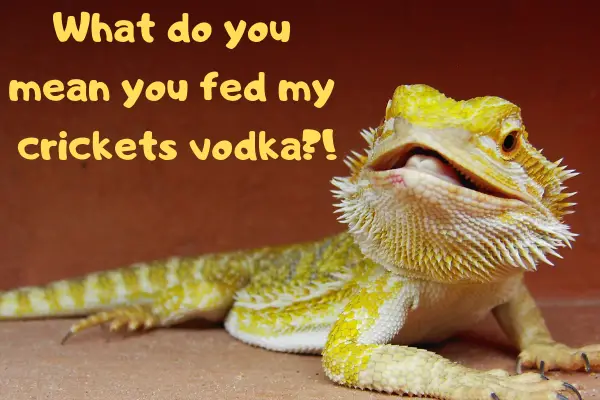
In this article you’ll find:
- Why caring for feeder crickets matters
- How to care for feeder crickets
- How to gut load crickets
- Cricket Q&A
Cricket care sheet
In this feeder cricket care sheet, we’ve summarized the entire article as briefly as possible. If you ever have to come back to this page after reading it, then a quick browse through this care sheet will refresh your mind!
Cricket housing: Keep your crickets in large plastic containers with ventilation.
Cricket feeding: Feed your crickets a mix of fruits, vegetables and the supplement you give your reptile. You can also use special store-bought gut loading supplements.
Water: Don’t spray or mist your crickets with water! This can aide the spread of disease and illness. Use a wet sponge or piece of wet paper towel. You can also feed them water-rich foods so they get enough liquids.
Table of Contents
Why caring for feeder insects matters?
You might be wondering why you can’t just keep the crickets in the little container they come in. At first thought, you might not see the point of housing another pet alongside your reptile just to feed it.
This is understandable, but it’s vital that you do!
At the end of the day, this is your pet reptiles’ main source of food. Failing to care for your crickets can result in very big problems for your reptile.
Not only can poor care of your feeder crickets lead to undernourishment in your pet reptile, but it can also lead to death in extreme cases!
Unhealthy crickets can carry nasty illnesses and diseases that your pet can pick up. Also, if they are eating malnourished crickets, it can result in a whole variety of different issues related to malnourishment.
Luckily, caring for crickets isn’t all too difficult, so it’s 100% worth doing if you love your pet!
How to care for feeder crickets
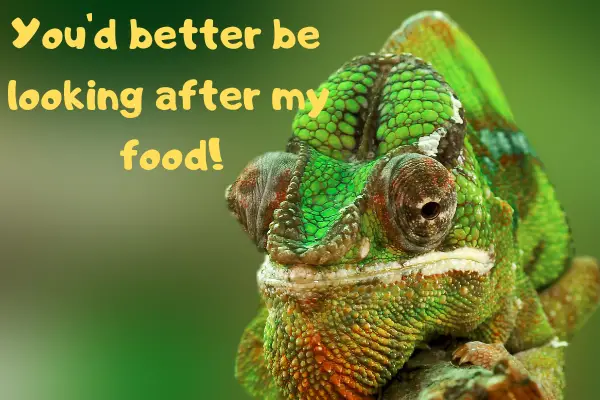
Caring for feeder crickets isn’t very challenging once you know what to do. Once you get used to keeping feeder crickets, you can even experiment with breeding your own! This can save on the costs of buying your own and can even be a fun pastime.
More on cricket breeding in another article.
When learning how to care for feeder crickets, there are a few things you need to know.
- How to house your crickets
- What substrate to use
- How to keep your cricket enclosure clean
- What temperature your crickets should be in
- How to provide them with liquids
We will deal with the topic of what to feed your cricket in the section on gut loading crickets, since they essentially mean the same thing.
How to house your crickets
So, you’ve got your little plastic tub of crickets from the store and you’re now wondering where to put them…
Crickets don’t need very much room, but they do need more than that small tub of course. Buy a 10 gallon (or more) plastic tub you can put them in. This gives them a little more room to actually be crickets.
Make sure that the tub is properly ventilated, so add enough holes on the lid and upper-sides of the container. This isn’t just important so they can breathe, but also helps to prevent the tub from getting too moist and bacteria from building up. If you’re feeling creative, completely remove the top of the lid (leaving the edges on) and cover it with a layer of thin mesh. This will really give your crickets enough fresh air.
No lid?
Most feeder crickets don’t jump very high (only far), so you may be tempted to buy a really high container and just leave the lid off.
Probably not the ideal way to go, but if you do go with this method, there’s a trick you can use to prevent them from climbing out.
Mix up some baby powder and rubbing alcohol, and spread it all along the edges of the container. This will prevent the crickets from getting a grip at the top and always cause them to slide down.
You may even like to do this when you go with the lid on approach. This prevents crickets from escaping when you do go to open up the lid, as you can be certain there are no crickets near the lid that are ready to jump out.
You should place some extra egg-cartons in the container to make sure the crickets have enough space to hide out in.
Now you have the container and have some hiding places ready for them, it’s time to add a substrate.
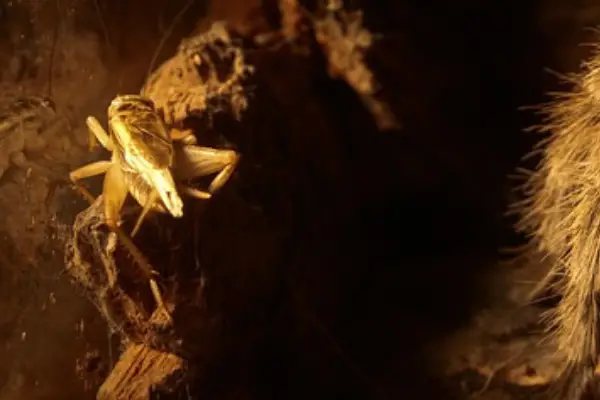
What substrate to use for crickets
Since it’s “just” food for your pet, you don’t want to over do it. Even when breeding crickets, you don’t need to spend a lot of money on substrate and the like.
Use something that’s removable as a substrate for your crickets to ensure easy cleaning. Something like paper towels will work fine.
This makes sure the container is easy to clean and will save you a lot of time and hassle in the long run.
If you have a very small number of feeder crickets, you can just wash out the container every time you buy new ones to clean it. However, it’s best to clean the container regularly to prevent any buildup of bacteria or the likes.
Keeping your crickets enclosure clean is vital to prevent diseases and illnesses from reaching your pet.
How to keep your cricket’s enclosure clean
There are a few things you need to do to keep your feeder cricket enclosure clean. The first is to spot clean regularly, at least every time you feed them or give them fresh water/liquids.
Spot clean the enclosure every day, and if you ever see any food going bad, then replace it. Also replace dirty pieces of paper towel whenever possible. Also make sure to remove any dead crickets you might find asap to prevent them from being eaten. Eating dead crickets can cause the spread of certain diseases and bacteria.
If those crickets have died from illness or disease, other crickets eating their bodies will cause it to spread. (Yes, crickets do turn cannibal from time to time!). Make sure you never feed your pet crickets that are already dead. Dead bodies release ammonia quite quickly as they start to decompose. This is very unhealthy for any reptile, and that’s not to mention the other bacteria and illnesses these dead crickets might carry.
Second, and this sort of has to do with providing your crickets with liquids, is to keep the container dry.
There’s nothing that stimulates bacteria and mold growth more than moisture and damp areas.
You should fully clean your crickets once a week if possible. When you have run out and have bought a new batch of crickets, make sure to fully sterilize the enclosure before putting the new crickets in. This can be done with soap and water, ideally combined with a wipe-down using rubbing alcohol afterwards.
This will help keep the enclosure fresh and prevent any unwanted bacteria from spreading to your new batch of crickets.
What temperature should you keep your crickets?
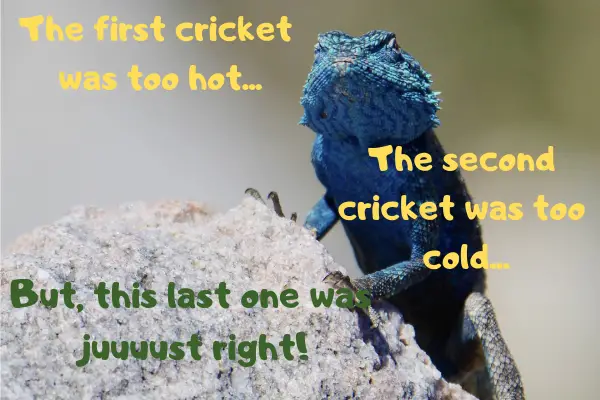
Ideally, you’ll keep your crickets around 70-75 degrees Fahrenheit (21-24 degrees Celsius), but just keeping them inside is good enough. If you aren’t actively breeding them, it’s not worth it to add heating or cooling fixtures since most homes are going to be around that temperature inside anyway.
Providing liquids to your crickets
First and foremost, DON’T spray or mist your crickets! It’s a great way of providing them with hydration, but also a great way of spreading disease, illness and bacteria.
Also, don’t give them a water dish. Feeder crickets will drown if they get stuck in the water so it’s best not to give them a water dish. Dead crickets in the water supply can also lead to contamination. If all crickets are drinking from that water supply, you could promote the spread of illnesses.
There are a few great alternatives though…
First, you can lay a wet paper towel or sponge in the container. Crickets are more than capable of sucking out the water and this should provide them with more than enough hydration. They will have no trouble finding the water when they need it.
Another option is to offer water-rich foods like cucumber and oranges. These will provide a lot of moisture to your crickets and will help nourish them at the same time.
When you first get your crickets, they are likely to be very dehydrated since stores generally don’t provide food/hydration in the little tub they come in. You don’t know how long they’ve been stuck in that tiny tub with no real source of water or food…
This is why you should aim to get the crickets into their container as soon as possible and supply them with some sort of hydration asap.
Feeder cricket care tips
- Give them enough protein! This helps keep them healthy and prevents them from eating each other. It also provides your pet with a more nutrient-rich diet.
- Clean clean clean! This can’t be stressed enough. Crickets can start to stink quickly if not cleaned properly, so keeping their container clean is going to prevent them from stinking up the entire room.
- Feed well before feeding to your pet. More on this next…
How to gut load crickets
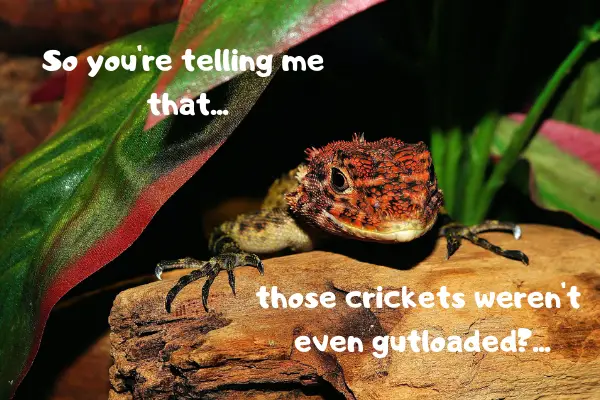
Gut loading crickets is vital in order to properly nourish your pet reptile. Without your crickets being in good condition, there’s no way that your pet will be.
When researching how to gut load crickets, you may be wondering what it actually means. To gut load crickets is simply to feed them nutritious foods. I know… stupid name.
There are a few options you have to gut load crickets.
- All natural
The all-natural approach would be just to feed them fruits and vegetables, in order to keep them healthy. You obviously have to dust your crickets in a supplement before feeding them to your pet, but this method does work quite well as long as you do so.
You can feed your crickets pretty much any type of food, from oats to fruits and vegetables. It’s best if they also get some form of protein too, as this is important in keeping them healthy.
Taking this route isn’t the most efficient method, but I can understand why people do it.
- Throw it in the mix
This is a highly sophisticated method of feeding crickets, and it consists of throwing a vast assortment of food items at them.
This method will provide a more-rounded diet to your crickets. Some foods that are often included are things like:
- Dog and cat food
- Oats
- Vegetables
- Fruits
- Fish food
- Reptile food
These are usually mixed with some of your pet reptiles supplement for added benefits.
I’ve seen recipes where it’s blended and provided to the crickets in a dish. This has the added benefit that you can remove the dish and throw it out straight away, keeping things clean.
Some people portion it and freeze it after blending so you can easily provide well-sized portions without having to make it fresh every time.
Other people just throw in the different ingredients and let the crickets choose what they want to eat.
Nutrition-wise, it shouldn’t really matter too much. Some methods are just a lot easier to clean up or are more practical. Just make sure you always feed your crickets nutritiously, as well as dust them before feeding.
- Load to the maximum
This method usually involves a lot of store-bought cricket feed that’s especially designed for gut loading crickets or other insects.
They also often add water gels to the container so that the crickets can stay hidrated.
Which ever method you go with, it really doesn’t matter…
You just need to make sure that your crickets are eating healthy and getting the right nutrients.
It can help to add your reptile’s supplements to your crickets diet, and store-bought gut loaders can add some extra nutrition to the mix too.
I’ve raised reptiles on crickets being fed a whole host of different things. As long as they are getting a good variety, your reptile should get plenty of nourishment from your crickets.
One thing though: stay away from bananas. Bananas have enzymes in them which will cause other food it touches to spoil quicker.
Cricket Q&A
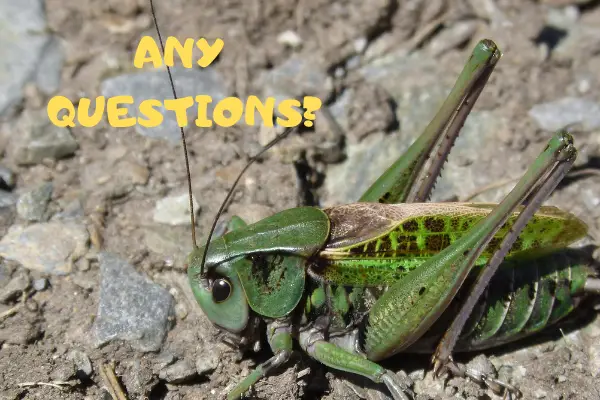
What can I feed feeder crickets?
Pretty much anything that’s going to nourish them properly. Mixes of fuits, vegetables and pet foods like dog/cat/fish food work great. Stick them in a blender, portion it then stick it in the freezer so you don’t have to constantly create new batches.
What do I do if feeder crickets escape?
Try to catch them! If you can’t, then there’s not much you can do but wait for it to leave or die. In most places, these crickets won’t breed and multiply or become a nuisance. However, you may have to deal with the chirping moving from one room to another for a while!
If you want to take some precautions, remove any plants with soil from your home, as this will prevent them from reproducing. It’s really not necessary in most cases though.
Do (feeder) crickets need water?
They do need some sort of hydration. The best hydration comes in the forms of water-rich fruits and vegetables, and water-soaked sponges and paper towels. Don’t spray or mist your crickets enclosure!
Why do I have to gut load crickets?
You gut load crickets to ensure your pet reptile gets enough nutrition from them. It’s the same reason why farmers feed their livestock!
What pet reptiles eat crickets?
Bearded dragons, leopard geckos and many other pet lizards eat crickets. Crickets are often seen as one of the most nutritious foods for lizards.
How long do feeder crickets live?
From birth to death, a cricket usually lives about 8-10 weeks. However, bad living conditions, illness, malnourishment or other problems can shorten their lifespan!
Can crickets survive in water?
Not for very long. Crickets don’t have lungs and breath through “holes” in their body which take in oxygen. This is why feeder crickets will often drown if there is a bowl of water in their enclosure
How long do feeder crickets live without food?
QUite long, but there’s no reason to test it out. Care for them properly and you’ll have a much healthier pet on your hands.
Do crickets eat each other?
If you’re wondering if crickets are cannibalistic…Yes! Feeder crickets have been known to eat each other, especially dead bodies. To prevent the spread of bacteria and disease, you should always remove dead insects from your breeder cricket’s enclosure.

